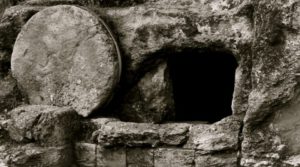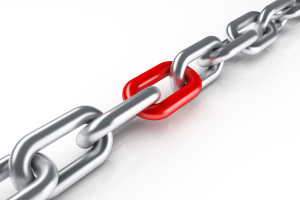Resurrection – Did It Actually Happen?
Resurrection of Jesus has been debated for centuries spawning many questions and theories.[1] People cannot easily wrap their minds around the impossible concept of being dead and buried, then coming back to life.
Medical or scientific tests cannot determine if a living individual was previously dead for days, thus a Resurrection cannot be ascertained scientifically. In the end, it makes no difference if the Resurrection occurred today or 2000 years ago.
Swirling are controversial attempts trying to explain the Resurrection. The tomb was not really empty; the witnesses visited the wrong tomb; the body of Jesus was misplaced or stolen; the third day prophecies are not a factor; the post-crucifixion person the witnesses encountered was just a spirit; etc.[2]
Circular logic is a common criticism.[3] In this case, the Gospels cannot be used as proof of the Resurrection because the only proof comes from the Gospels and if the believability of the Gospels is in question, then Gospels cannot be used as evidence.
Gospels are accounts or reports of what happened, not proof that something did or did not occur. Included are identities, statements and quotes of witnesses; and descriptions of events – some detailed, some paraphrased.
No statement or report by one person will ever completely provide all the details of a witnessed incident. Some details may not have been as important to emphasize over other information or simply the information was not known to a particular writer.
Comparing one Gospel to another is one of the most effective ways to assessed overall content credibility of these accounts, reports or statements. As with any investigative case, gaps in one account may be detailed in another.
No resurrection case can be made without eyewitnesses who would have to bridge three separate events – life, an incontrovertible death, and evident life again. Credible witnesses would have to be able to say with certainty that the person whom they once knew, was then known to be dead and is now alive again behaving as before death.
Witnesses would be expected to attest to their ability to resume a pre-established personal connection with the resurrected person whom they knew before death occurred – the continuum of a shared personal relationship.
Visual recognition would not be enough to dispel the notion of having seen a vision or an apparition. Witnesses also would be expected to affirm activities of the resurrected person are associated with life itself such as a conversation, eating, drinking, walking, and other physical activities.
A prime example is the resurrection of Lazarus whom Jesus raised from being dead after four days. A week later, Lazarus came to a dinner event with Jesus days before his own death and resurrection.
The Witnesses
First of the eyewitness statements of the resurrected Jesus, aside from angels, comes from Cleopas accompanied by his traveling partner, most likely his wife.[4] Characteristics described are several – walking; carrying on a conversation over a long period time; references to his own teachings before his death; reclining at the table; breaking the loaf of bread and…praying.

Next is the profound report of Mary Magdalene’s encounter.[5] She recognized Jesus, whom she believed was dead and buried, exclaiming “Rabonni!” (teacher) and wanted to hug him.[6]
Peter, who had witnessed the empty tomb with the folded burial linens, also met with the Resurrected Jesus. The only mention of Peter’s encounter is in Luke’s investigative Gospel account.[7]
Ten Disciples, the Cleopas couple and other followers of Jess were in a locked room excitedly sharing stories of Resurrection encounters. Suddenly Jesus himself stood among them saying, “Peace be with you.”[8]
Luke reports they were all startled and “terrified” thinking they were seeing a “ghost.”[9] Jesus responded:
LK 24:38-39 “‘Why are you frightened, and why do doubts arise in your hearts? Look at my hands and my feet; it’s me! Touch me and see; a ghost does not have flesh and bones like you see I have.’ When he had said this, he showed them his hands and his feet.”(NET)
Noticing they required further proof, Jesus asked, “‘Do you have anything here to eat?’ So they gave him a piece of broiled fish, and he took it and ate it in front of them.”[10] Bridging back to the time before he was crucified, Jesus told them to think back to their experiences together:
LK 24:44, 47-48 “These are My words which I spoke to you while I was still with you, that all things which are written about Me in the Law of Moses and the Prophets and the Psalms must be fulfilled… ‘Thus it is written, that the Christ would suffer and rise again from the dead the third day, and that repentance for forgiveness of sins would be proclaimed in His name to all the nations, beginning from Jerusalem. You are witnesses of these things.’” (NASB)
Missing the occasion entirely was the Disciple Thomas.[11] When he finally arrived that Sunday evening, Disciple John told him they had seen Jesus.
Skeptical, Thomas was not buying any of it. “Unless I see the wounds from the nails in his hands, and put my finger into the wounds from the nails, and put my hand into his side, I will never believe it!”[12]
Eight days passed when the Disciples regathered in the same house with the door locked, but this time Thomas was present.[13] Once again, Jesus suddenly appeared in the room and, after a brief greeting, got straight to the point.
Speaking directly to Thomas, Jesus said “Put your finger here and see my hands. Reach out your hand and put it in my side.[14] Do not doubt but believe.”[15]
Thomas touched the physical body of Jesus and witnessed the proof of his miraculously healed pierced hands and side. Thomas’ excited utterance was telling: “My Lord and my God!”[16]
John’s eyewitness Gospel continued beyond where Matthew, Mark and Luke left off. Describing the third appearance of the resurrected Jesus to some of the Disciples, he describes the scene on the shore of the Sea of Tiberas (Sea of Galilee, Sea of Gennesaret or Sea of Kinneret).[17]
Seven disciples, five identified by name as Peter, Thomas, Nathanael, and the sons of Zebedee (James and John) encountered Jesus who teased them; performed another fishing miracle recognized by the author; and met the Disciples at a campfire, cooked breakfast, ate and conversed with them.[18]
Recognition by his own family – his mother, Mary, and brother, James – are better witnesses than any other.[19] According to Jewish historian Josephus, James the brother of Jesus, died a martyr’s death at the hands of the Sanhedrin for proclaiming to the end that Jesus is the Messiah who had been resurrected.[20]
Gospel accounts of the Resurrection of Jesus came in the form of witnesses, actions, words and behavior of the various others. Witnesses include angels, women of Galilee, the koustodia, members of the Jewish leadership, Disciples and others.
Do the Gospels meet the criteria for demonstrating a genuine Resurrection had occurred – did Jesus actually rise from the dead?
Updated March 31, 2024.
This work is licensed under a Creative Commons Attribution-NonCommercial-NoDerivatives 4.0 International License.
REFERENCES:
[1] Habermas, Gary R. “Resurrection Research from 1975 to the Present: What are Critical Scholars Saying?” 2005. Dr. Gary R. Habermas. <http://garyhabermas.com/articles/J_Study_Historical_Jesus_3-2_2005/J_Study_Historical_Jesus_3-2_2005.htm> Saifullah, Usman Sheikh, et. al. “Textual Reliability / Accuracy Of The New Testament.” Islamic Awareness. 2007. <http://www.islamic-awareness.org/Bible/Text/Bibaccuracy.html> Lowder, Jeffery Jay. “Independent Confirmation and the Historicity of Jesus (1997).” The Secular Web. n.d. <https://infidels.org/library/modern/jeff_lowder/indconf.html> Seidensticker, Bob. “Contradictions in the Resurrection Account.” Patheos.com. April 2, 2012. <https://www.patheos.com/blogs/crossexamined/2012/04/contradictions-in-the-resurrection-account-2>
[2] “Resurrection.” Infidels.org. n.d. <http://infidels.org/library/modern/theism/christianity/resurrection.html> Lowder, Jeffery Jay. “Historical Evidence and the Empty Tomb Story.” Infidels.org. <http://infidels.org/library/modern/jeff_lowder> Lowder, Jeffery Jay. “How Not to Argue Against the Historicity and Resurrection of Jesus.” The SecularWeb. n.d. <https://infidels.org/library/modern/jeff_lowder/edelen.html> “New Testament.” Jewish Encyclopedia. 2011. http://jewishencyclopedia.com/articles/11498-new-testament> Holding, James Patrick. “Please Pardon This Interruption.” Creation Ministries International. 2009. <http://creation.com/review-jesus-interrupted-by-bart-ehrman> Steinhart, Eric. “Some Resurrection Theories.” Eric Steinhart. n.d. http://www.ericsteinhart.com/articles/reztheories.pdf> Qu’ran. An-Nisa 157, Al-Maeda 110. <http://search-the-quran.com> “Did Jesus Resurrect From the Dead in an Invisible Spirit-Body?” 4Jehovah.org. 2014. <http://4jehovah.org/the-resurrection-of-jesus-a-spirit-body> “Was Jesus Resurrected as an Invisible Spirit?” Tower to Truth Ministries. n.d. Archived URL. <http://www.towertotruth.net/dialoguept2.htm>
[3] “Circular Reasoning.” Logically Fallacious. 2020. <https://www.logicallyfallacious.com/logicalfallacies/Circular-Reasoning> Van Der Zee, Tim. “Circular arguments are perfectly valid.” The Skeptical Scientist. 2017. <http://www.timvanderzee.com/circular-arguments> Andrews, Ben. Atheist Republic. 2020. <https://www.atheistrepublic.com/blog/ben-andrews/circular-reasoning>
[4] Luke 24:13-27.
[5] John 20:16. “Centuries later, archaeologists opened the tomb of Jesus.” News24hours. photo. 2016. <https://news24hours.in/2016/10/31/centuries-later-archaeologists-opened-the-tomb-of-jesus-christ>
[6] John 20:18.
[7] Luke 24:34.
[8] Luke 24:36 – NET, NIV, NLT, NRSV. John 20:19 – NET, NIV, NLT, NRSV, NASB, NKJV.
[9] Luke 24:36-37. NET. CR Mark 16:14.
[10] Luke 24:38-43. NET. CR Mark 5:43; Luke 8:55.
[11] John 20:24.
[12] John 20:25. NET. CR Matthew 28:17.
[13] John 20:26.
[14] John 20:27
[15] John 20:27. NRSV.
[16] John 20:28. NET, NIV, NASB, NRSV, NKJV.
[17] “The Sea of Galilee (Kinneret).” Jewish Virtual Library. 2020. <https://www.jewishvirtuallibrary.org/the-sea-of-galilee> “Gennesaret.” Jewish Encyclopedia. 2011. <http://jewishencyclopedia.com/articles/6583-gennesaret-lake-of>
[18] John 21:4-14.
[19] Acts 1:14
[20] Josephus, Flavius. Antiquities of the Jews. Book XVIII, Chapter III.3.n.d <http://books.google.com/books?id=e0dAAAAAMAAJ&printsec=frontcover&source=gbs_ge_summary_r&cad=0#v=onepage&q&f=false>

